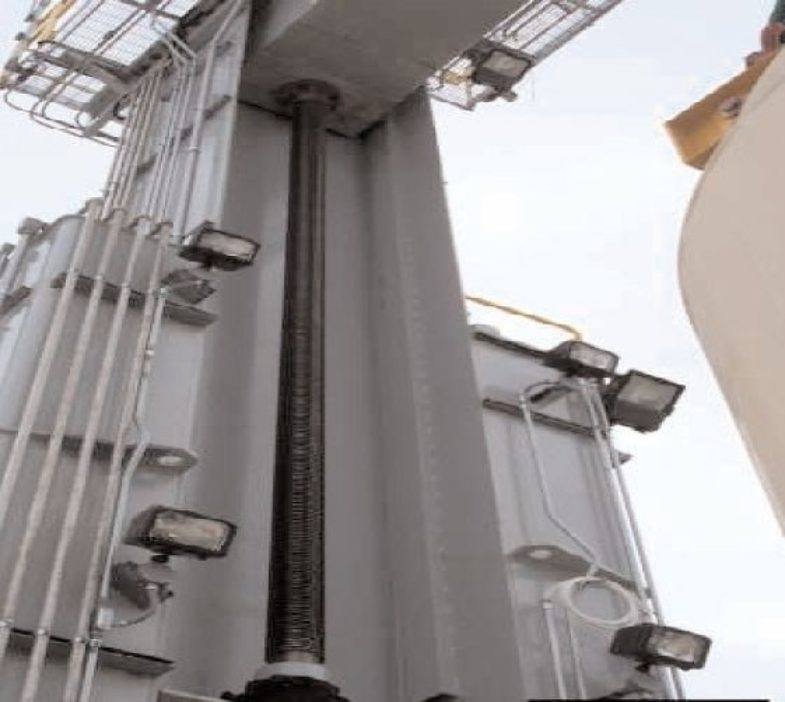Joyce Dayton Jacks: Find the Right Balance
The Problem:
Joyce Dayton was contacted by a company that required components for a multi-purpose canister (MPC) lifting system in order to transfer spent nuclear fuel. Because of the nature of the nuclear fuel, transferring the material was a highly regulated process. The movement of the “shuttle cask” used to transfer the MPC into a storage overpack had to run smoothly and consistently to ensure a safe transfer. The bridge raising the “shuttle cask” must travel absolutely level. The transfer system had to be able to withstand extreme environmental factors such as the impact of a tornado missile (a telephone pole travelling at 300 miles per hour) striking the system at a top corner of the bridge.
The Solution:
The transfer system consisted of two 18m towers which supported a 9m horizontal travelling bridge structure. The lifting mechanism was designed with two 6m Joyce jackscrews – one in each of the towers – along with Joyce motors, gearboxes and shafts. The Joyce, self-locking jackscrews provided redundancy to the system. The jack’s travel length was 6m. A full shuttle cask was placed under the transfer system, the bridge was lowered and a cask connector bracket was used to grasp the shuttle cask. The cask was then lifted and a storage cask was slid underneath. The transfer system lowered the MPC from the “shuttle cask” into the storage cask for safekeeping.
With the spent fuel and cask being extremely heavy, the Joyce Dayton jacks had to be capable of lifting 113 Tonnes or more at an average travel speed of 30cm per minute. The system was designed with an overall 10 to 1 safety factor, meaning that the lift must be capable of lifting ten times the expected load without failing. An investigation into hydraulic lift systems revealed that in the event of a system failure, the safety of the transfer could be compromised. By using an acme thread that will not backdrive, the jackscrews ensured that the cask transfer would not experience uncontrolled lowering. The jackscrews were a significantly cost-effective feature in the overall bid for the project and only require simple, easy to perform maintenance. Cranes with comparable safety margins can cost up to five times as much.
The Result:
The Joyce jackscrews offered better synchronisation in this application. Testing prior to application included 125 percent of load tests. The lift elevated the average determined load size plus 25 percent and was required to hold that load for a pre-determined amount of time. The lifting system performed beyond the expectations and proved its capability to maintain the 10-to-1 factor of safety.

